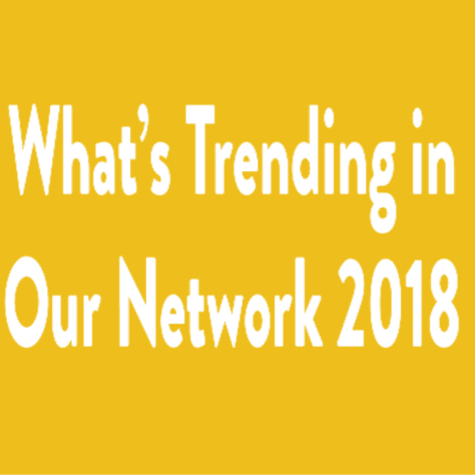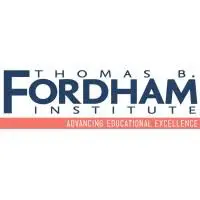Here at 100Kin10, we are constantly learning from our nearly 300 leading partner organizations while maintaining a pulse across the field, via teachers, researchers, and other leaders dedicated to supporting excellent STEM teaching and learning for all students.
It’s a unique and privileged position to be in, at the intersection of so much wisdom. Recognizing that, we start each year by synthesizing all that information into our Trends Report: ten bite-sized insights that emerge from the data. The ten reflections will shape 100Kin10’s work in the year to come, and we hope they will have resonance for yours, too.

1 // TEACHER SHORTAGES GROW, ALONGSIDE STOP-GAPS AND EVEN SOME INNOVATIVE SOLUTIONS
Teacher shortages are a growing problem across the country. From Atlanta to rural Colorado, schools and districts are struggling to attract and retain high-quality educators, especially in STEM, due in part to low pay, poor working environments, and a strong economy that holds the promise of more lucrative employment. As 100Kin10 predicted in our 2017 Trends Report, we’ve continued to see an increase in states using emergency credentials to fill teacher shortages. However, these stop-gap solutions are raising concerns about the sharp rise in the number of under-qualified teachers. There is a growing recognition that emergency credentials don’t address the underlying reasons for teacher shortages — and leave classrooms helmed by people unprepared for the job, especially in our highest-need communities.
100Kin10 partners are ahead of the curve on this issue, developing innovative solutions that go beyond emergency credentials. In 2018, the National Math + Science Initiative led a project team that examined challenges and best practices for strategic teacher preparation at the regional level targeted at specific STEM shortage areas. The Project Team developed a dynamic and customized tool to help teacher-prep programs and school districts assess the strength of their partnership and address areas of need. In 2019, Fort Hays State University will lead a Project Team exploring how to support emergency credentialed teachers to make the transition to full certification. At the same time, we’re seeing continued energy around teacher residencies at the federal and state levels, including in California and Pennsylvania, building on research showing the impact of residency programs on teacher retention and success as a bulwark against shortages emerging in the first place. 100Kin10 partners have been at the front of the pack in developing and managing teacher residencies since their inception, with leadership by organizations like National Center for Teacher Residencies, Academy for Urban School Leadership, Boettcher Teacher Residency, and New Visions for Public Schools, among others.
2 // TEACHERS ARE HUNGRY FOR MORE HIGH-QUALITY NGSS RESOURCES
In the nearly 20 states where the Next Generation Science Standards have been adopted, teachers and districts are facing the formidable task of bringing the new and more demanding standards to life. NGSS is meant to transform science education, but teachers tell us the transformation is slow in coming. 100Kin10’s Teacher Forum members continuously share frustrations with the lack of NGSS-aligned resources. Teachers don’t know where to look to find high-quality materials or examples of high-quality NGSS-aligned teaching. Fortunately, a number of 100Kin10 partners are working to fill this gap.
NGSS was a hot topic at the 100Kin10 Annual Summit, where WestEd, CDE Foundation, and the California Science Teachers Association each presented innovative tools, resources, and advocacy efforts to support teachers to teach to the new standards. The Bill and Melinda Gates Foundation, Carnegie Corporation of New York, and the William and Flora Hewlett Foundation began testing the OpenSciEd materials, part of a multi-year effort in partnership with the Schusterman Foundation to provide free, high-quality, and locally-adaptable NGSS instructional materials. The focus extended to a Project Team bringing together experts from the National Math + Science Initiative, the University of Illinois Urbana-Champaign , and Penn State Center for Science and the Schools to explore how professional learning communities can support teachers in rural communities around NGSS implementation. And the National Academy of Sciences is hosting a convening focused on NGSS implementation at the district level in January 2019.

3 // BRINGING THE M BACK TO STEM
The definition of the term STEM is hotly contested, sometimes leading to divisions in the STEM community. We’ve heard directly from our Teacher Forum members that math is frequently left out of STEM conversations and opportunities. Teachers in Silicon Valley painted a nuanced picture of this challenge, describing how the region’s focus on tech has led to a shrinking interest and respect for math. Robert Q. Berry, President of 100Kin10 partner the National Council of Teachers of Mathematics, has raised similar concerns. We’ve also heard from the Math Teachers’ Circle Network that math teachers and math professionals feel a sense of disconnect from the broader STEM community.
We’ve been inspired to see many partners take the lead in providing a fresh perspective on math as an integral part of STEM learning. Partners like Illustrative Math and PhET Interactive Simulations are giving students the opportunity to engage with math through active learning and to apply mathematical concepts to solve complex problems. Arizona State University is putting active learning and inquiry-based pedagogies front and center when preparing candidates to teach math at all grade levels, and the Erikson Institute Early Math Collaborative is running innovative professional development for early-grade teachers so that kids experience math as a “creative, meaning-making endeavor” that nurtures a lifetime of problem-solving.
4 // EARLIER STEM TO ADVANCE EQUITY
In recent years, there’s been mounting evidence that early exposure to STEM education leads students to be more successful, not only in high school and college but more broadly throughout life. Early education in science and math, in particular, have been shown to predict socioeconomic status well into adulthood. In 2018, we saw more educators and experts responding with a wide range of initiatives that support early STEM, many with a focus on equity.
We’ve seen this with partners like Museum of Science Boston and the University of New Hampshire, each of which developed new programs focused on elementary STEM teachers. We also noticed partner collaborations on this topic: the Project Team led by the Public Education & Business Coalition focused on preparing elementary teachers to teach digital literacy and computer science, and a partnership between the EDC Center for Children and Technology and Bank Street College of Education aimed to provide standards-aligned math professional development to elementary teachers. We’ve also seen an increased focus on addressing inequity directly through early math and science. The Heising-Simons Foundation is funding early childhood math programs for students from low-income households, while New York Hall of Science developed and implemented their Creative Computing Academy, which used generous support from Google to expose 3rd and 4th graders from immigrant communities to computational thinking.

5 // STEM IS ENGINEERING THE FUTURE WORKFORCE, WHETHER YOU LIKE IT OR NOT
It’s no secret that STEM jobs are more likely to yield higher paychecks, both among college graduates and for those with a high school diploma. With the cost of college continuing to skyrocket, and uncertainty around the future of work increasing, STEM jobs are increasingly seen as the most sensible careers for students to pursue. As a result, PK–12 learning is becoming more intertwined with the practical side of STEM. We saw this at the national level in April when leaders from the public, private, and nonprofit sectors gathered in Washington D.C. for “STEM Solutions: Workforce of Tomorrow” to discuss strategies for building a stronger STEM workforce, and in July, when the Perkins Act was reauthorized, emphasizing the need to develop career and technical pathways that align with STEM. We’ve also seen partners take the lead on this front, like Boeing and 100Kin10 partner National Science Foundation partnering to support workforce development and diversity in STEM, and many others like Ignited, University of Arizona’s Teachers in Industry, and NAF running initiatives to support teachers and students to build stronger connections with STEM industry professionals and career pipelines.
There’s much to celebrate about the alliance between PK–12 STEM learning and the workforce, but it’s worth noting that the value of deep and authentic STEM learning does much more than just build the workforce pipeline. It nurtures opportunities for inquiry and curiosity; to collaborate, experiment, fail, and persevere; to better understand our bodies, nature, and the built environment; and to practice the kind of critical thinking and creative problem-solving that will be useful in all arenas of life.
That’s why we’ve been excited to see partners like California State University, the Bay Area Discovery Museum, and Carnegie Science Center using makerspaces and mobile engineering labs to provide hands-on experiences for young students, fostering a love for STEM learning long before they’re writing resumes. We’re also seeing early indications of STEM as a vector for revitalizing joy in the classroom. Read on for more on that topic.

6 // ANCHORING STEM IN JOY, CURIOSITY, AND EXPERIMENTATION
In recent years, PK–12 education has shifted to focus heavily on academics and testing, often with negative impacts. More recently we’ve started to see the earliest signs of an emerging movement to refocus the classroom around joy and experimentation. Our Teacher Forum members reported that the most exciting STEM learning is happening outdoors, as it taps into and reinvigorates kids’ natural curiosity. Partners like the New York Botanical Garden and the San Diego Zoo are developing STEM tools and curricula that engage students in everything from rare plant species to elephants.
In 2018, a project team collaboratively led by DSST Public Schools, CU Boulder, Hillsborough County Public Schools, and the NSTA/NCTM STEM Teacher Ambassadors Program developed Performance-Based Assessments in Science, enabling teachers to operate beyond testing-focused instruction and incorporate more experimentation and project-based learning into their classrooms. The New York City Department of Education and ExpandED Schools are supporting teachers to experiment with more engaged pedagogies and integrate citizen science into their classrooms. We’ve heard from dozens of other partners who are excited to find new ways to use STEM to bring joy and curiosity into education. We predict even more, in 2019 as partners continue to make progress on one of the highest-leverage catalysts from the Grand Challenges: moving from accountability systems that encourage rote memorization to those that promote teacher creativity.

7 // BEYOND HARD SKILLS: STEM AS SOCIAL-EMOTIONAL LEARNING
Leaders from LinkedIn and the World Economic Forum agree: students need soft-skills and social-emotional competencies to be effective leaders and team members in the 21st century. Prominent education publications are also discussing this, focusing on the need for teachers to understand social-emotional learning and brain science to better support their students in developing social skills that complement academics. Funders like the Chan Zuckerberg Initiative are embracing the whole child approach to learning, and there is growing interest in STEM — with its natural connection to curiosity, experimentation, and teamwork — as an integrated, content-forward way to foster growth mindset, grit, perseverance, and the soft skills most essential to 21st-century life.
Our Teacher Forum members have pointed out that the myth that STEM is only about hard skills is slowly waning, and partners are already taking early steps in this direction. The Charles A. Dana Center at the University of Texas at Austin is partnering with Agile Mind to lead a Project Team that aims to support students in adopting a growth mindset by addressing teachers’ implicit biases about who can and cannot excel in STEM. Colorado Education Initiative has championed the Student-Centered Accountability Program (S-CAP), a joint effort by small, rural Colorado school districts that considers the whole child to develop an approach to accountability that incorporates a wide range of indicators of district and school quality, focuses on the needs and interests of local communities, and is supported by a network of peers. With more partners contributing and more national attention, we predict that in 2019 we’ll see STEM increasingly being used to strengthen metacognitive and social-emotional skills so that more students can flourish in all aspects of their lives.

8 // STEM LEADING THE WAY TOWARD STUDENT AGENCY AND PERSONAL RELEVANCE
Over the past decade, we’ve seen a growing trend toward personalized learning, pushed forward by ed tech companies’ digital tools and platforms. However, there has been criticism that these tech-based solutions not only fail to reach all students, but also limit teachers from connecting personally with students, especially those from underrepresented and low-income communities. Building on research about the importance of relevance and agency for student learning and motivation, 100Kin10 partners are helping to pioneer an approach called personally-relevant pedagogy that we predict is a harbinger of things to come.
A Project Team led by The Tom Joyner Foundation brought together partners from ExpandED Schools, KQED, the American Federation of Teachers, and the National Math + Science Initiative to develop a deeper understanding of how to make learning more relevant and interconnected for students, exploring how issues such as culture, identity, and self-awareness come up in pedagogy. The team created a new framework to define personally-relevant pedagogy, conducted an extensive literature review to understand existing research, and began developing tools and exercises to support teachers in designing learning experiences that are engaging, empowering, and personal. With the global trend around mass personalization heating up, we expect to see even more activity in the education world, both through technology and pedagogy, to make STEM — and through STEM, all learning — more personally relevant for all students.
9 // TEACHER ACTIVISM IS UP, INTEREST IN TEACHING IS DOWN, BUT CHANGE IS COMING
We have been inspired throughout 2018 to see our prediction from last year’s Trends Report of more teachers entering the political sphere become a reality. We saw a new wave of teacher activism across the country gain traction this spring, and thanks to the recent midterm elections, educators will account for 15 percent of state lawmakers in the coming year. And the public is paying attention. According to The Washington Post, there is broad support for the profession and in particular for increasing teachers’ salaries.

But there are warning signs: The annual Phi Delta Kappa poll showed that while support for teachers is up, the majority of Americans do not want their children to become teachers. Partners have stepped up to address this potentially harmful public perception. In 2018, a Project Team led by Colorado School of Mines focused on improving the perception of the STEM teaching profession created a toolkit and resources to debunk common myths about teaching that is now being funded by the National Science Foundation. With teacher activism and political engagement on the rise, and solid data showing that teachers are happier than other STEM professionals, as well as a wave of teacher retirements that are going to put a fine point on the need to recruit more teachers, we predict we’ll see more teacher-focused activism to improve the overall experience of teachers and are banking on perception as a lagging indicator ready for an adjustment.

10 // DESIGNING SCHOOLS WHERE TEACHERS AND STUDENTS THRIVE
Too often, school leaders create a dichotomy: either students or teachers can flourish, but not both. The opposite is true. Research shows that the only sustainable path to student success is through schools where teachers and students thrive. Last year, our massively crowd-sourced research around the root causes of the STEM teacher shortage revealed that three of the highest-leverage areas for change are related to the work environment for teachers. 100Kin10 also heard this directly from educators in our Teacher Forum, who told us that they are in need of time to collaborate with peers, participate in professional development, and experiment with new approaches in the classroom. We know these are areas with tremendous potential for impact, not only within our network, but for the education field at large.
In 2018, we focused our network on addressing these issues, beginning with a research report analyzing all existing research on teacher work environments and exploring the most promising opportunities for change. We’re excited that over 20 partners have taken the baton and formed four new Project Teams around these issues: Integrating Professional Growth into the School Day, Measuring Positive Work Environment and Culture in Schools, Partnering with Schools to Nurture Positive Work Environment, and Supporting Holistic Frameworks for Mentoring Teacher Leaders. Through six month-long collaborative projects, these four teams will develop products to support schools, school leaders, and teachers across the country to build stronger work environments. And we don’t think it will end there… we’re betting that this early progress on work environment will have a ripple effect across the system, prompting broader attention, energy, and activity focused on creating schools where teachers can thrive so that students can thrive.




